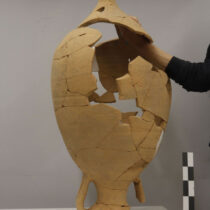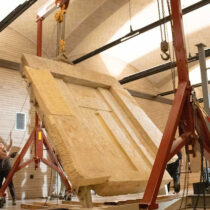How was time perceived in antiquity? What systems were in use for placing everyday activities in some order or time sequence? How was the present perceived in connection with the past and the future? These are questions dealt with in this issue of the Archaeologia journal. Mycenaean calendars, cyclical time in Homer and Hesiod, the attempt made by the Orphics to see time outside of cycles, prediction of the future in Roman times and the fond dwelling on a golden age, Augustus’ sundial at Campus Martius in Rome, the questions posed by the early Christians and the adoption of a linear concept of time, with no turning back and controlled by destiny.
The passage of time in Greco-Roman antiquity
23 Aug 2012
by Archaeology Newsroom
- A
- A
- A


